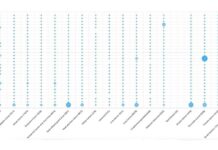This editorial is a response to many and many requests to submit a paper on diabetes although I never treated diabetes except for a few subjects.
I treated many reversible pathological conditions by teaching a meal pattern prompted by demand (from children) or hunger perception from adults. Initially I recruited infants in the second year of life. Mothers of these infants wanted a different meal pattern for relapses of diarrhea, vomiting or anorexia. I taught a meal pattern based on demand by the infant[1 ŌĆō 4].
The name of the novel way of eating was Initial Hunger Meal Pattern (IHMP) after arrival of adults who required treatment for functional disorders of the bowel or for body overweight[3]. Treated subjects underwent to a decrease of daily energy intake together with a decrease in the weekly preprandial blood glucose (BG). Both were assessed by 7-d home diaries. The diaries combined the report of energy consumption per meal and the consequent BG at the end of inter-meal interval.Energy amount per meal was the bet that adults had to predict in order to arise three events of initial hunger (IH) per day and the preprandial measurement checked the attempted amount [1 ŌĆō 3].
Subjects learned to recognize IH by experiencing meal suspension for two or more hours. The diary gave the possibility to self-check the adequacy of the attempted amount for the metabolic needs during the interval between meals. Energy administration and intake were proportionated to the time interval to be achieved before arousals of hunger perception or demand by the infant. Children preferred a higher number of meals. The meal pattern of infants responded to three to six hunger arousals per day.
Old people also accepted two meals per day.The mother had to learn metabolic expenses of the child and the satiating power of food items through the day[4]. The constancy in composition of the first food, milk, produced an easy ŌĆ£colloquiumŌĆØ where maternal words were alternated with milk administration/intake.
A quarter of an hour of one breast was often sufficient. The mother might add 5 minutes of the second breast, approximately. The one year old childŌĆÖs demand might consist in walking, crying, indicating, in a mood change or in searching for food. Each demand manifestation should appear in absence of food cues. Adults and infants showed that BG was constant at hunger perception: BG was 76.6 ┬▒ 3.7 mg/dL [1 ŌĆō 4]. Adults could notice mental or physical weakness instead of gastric pangs and the concomitant BG was similar[3].
Heavy physical work, open air and cold clmate implied a higher BG in association with hunger arousal [1, 2]. At recruitment, a third to a half investigated adults and children showed already a BG about 76.6 mg/dL [1]. This finding suggests that a consistent minority of children and adults approximately follow hunger signals or a BG estimation to predict energy needs and decide intake. This was shown by few control subjectswho accurately estimated BG [3]. Mean preprandial BG in a week (MBG) decreased about 20%, energy intake decreased by 20% ŌĆō 30% [1, 2].
Also glycated hemoglobin decreased consistently and significantly. The list of decreases (effects) includes Resting Metabolic Rate by indirect calorimetry, Total Energy Expenditure bydoubly labelled water and insulin resistance by glucose tolerance tests for about15% ŌĆō 30% together with body weight decrease [1- 7].
Body weight did not decreasein those who were both normal weight and insulin sensitive at recruitment [1, 4]. These resultscorrespond to the homeostatic energy availability, to prevention of fattening, diabetes,to prevention of the associated vascular risks and to prevention of malignantdiseases [7].Members of the Study for Ingestive Behavior (SSIB) already questioned how trained subjects became able to predict BG.
Homo sapiens are capable to recognize many more sensations than the well-known sensations obtained by 6 senses: sounds, rhythms, figures, abdominal pain, headacheŌĆ” Accurate estimation of current BG after training demonstrated that children and adults learn sensations of current energy availability [3].These recognition activities remained useless and neglected by mankind for long timeuntil abundant food production. Unexplored sensations do not mean that hunger sensations do not exist or have to remain outside the realm of science, much more that the IH recognition curbed conditioned intake by an individual amount thatwas related to the energy intake and BG at recruitment [1 ŌĆō 7].
These resultscorrespond to prevention of fattening, diabetes and associated vascular and malignantdiseases [7]. Before diabetes development, conditioned intake promotes a 30 % increase in insulin resistance, 15% increase in resting metabolic rate, steatorrhea, slowing down of nutrient absorption, increased growth of few bacterial species that are immunogenic and a conspicuous increase in immune stimulation [8 ŌĆō 19]. More than half immune cells reside in the mucosa of small intestine [9]. Functional alterations develop like headache, abdominal and joint pain. After decades of high immune stimulation, vascular risks and malignant diseasesincrease their prevalece [17].
These developments suggested already prevention. In the year 2012 we wrote: ŌĆ£Infants with relapsing diarrhea are more sensitive than otherinfants to a positive energy imbalance, eg, during scheduledmeals, because they have lower production of insulin andthinner skin-folds. The choice between scheduled andrequested meals may be a historical or fashion issue. In thefirst days of life, these two feeding options are equivalent, andare dictated by familial and medical customs, current localfashion, convenience, and also by a null hypothesis, which iswrong. Currently, a ŌĆ£crowd effectŌĆØ by the general intake trendmay nullify any intake education at an early age like in thisreport.
Given the fact that part of the population maintainslow preprandial blood glucose by free choice, given the demonstratedmaintenance of requested meals up to 12 years ofage, the equivalence of early instructions for new mothers,the habitual, persistent nature of mean blood glucose due toassociated organic changes, and emphasizing better health inchildren and adults who maintain preprandial low bloodglucose, a change in instructions on rearing seems obviousand mandatory from the neonatal days.
This change might help many people to maintain low blood glucose levels. Preadolescents closely depend on conditioning but adolescentsprefer a free choicein our investigations [20]. Adults are conditioned by social constraints and about 30% refuse to implement instructions. Acceptation of feeding by demand sincenewborn days would be an important, healthy suggestion for all life.
We had the opportunity to follow two diabetic subjects 50 ŌĆō 60 years of age old [20]. They followed a diet that was prescribed by dieticians of about 1200 kcal per day and had reached the Body Mass Index (BMI) of 33 and 39. Both subjects showed no hunger arousal even after 48 hours of starvation, neither as gastric pangs nor as body or mental weakness.
The first subject maintained a BG of 76 mg/dL to 80 mg/dL during use of metformin, He stopped metformin and maintained an intake of 350 kcal per day; the second maintained a BG of 95 mg/ dL with a similar intake for one year. Both decreased their body weight by 20 % and 15 % of initial weight and after this decrease had again hunger manifestations at a BG of about 76.6 mg/dL. They had low energy intake and low BG and an important body weight decrease without complaining hunger or body and mental weakness until BG was again low.
Maintenance of hunger manifestations appears to be important in prevention of diabetes. MBG passed from 79┬▒ 2.0 mg/dL to 76.6 ┬▒ 3.1 mg/dLand included events of IH. MBG in┬Ā the second subject passed┬Ā from 95.4 ┬▒ 12.2 mg/dL to 92.0 ┬▒ 13.6 mg/dL after one year. Yet, the measurements before 7 dinners decreased to 75.3 ┬▒ 5.1 mg/dL in association with hunger manifestations. We have to few data for conclusions.
We may however suggest further research. Before treatment with antidiabetic drugs, assess MBG and IH arousals. It seems possible that diabetic people cannot decrease BG down to 76.6 ┬▒ 3.7 mg/dL and have lost IH arousals. Moreover the two diabetic subjects inform us that energyintake may largely be reduced if we provide all essential minerals and vitamins. This energy poor provision consisted mainly in not starchy vegetables and 150 grams of meat per day. Fruit could be added. Flour and fats were eliminated.
CONCLUSION
Current society promotes diabetes since the first newborn meals by food offering:scheduled meals are considered normal custom for educated societies. Infant/mother pairs recognize easily initial hunger (IH) without BG measurements [5]. Adults can learn the recognition of BG infew days. Repeating the recognition of IH sensation after the first initial meal suspension requires, in adults, a validationby the preprandial measurement of BG.
The hospital autoanalyzer confirmed the learning by glucometer .Meals allowing three IH arousals per day are associated with an even energy balance [3, 4].This meal pattern may become the reference for normal energy intake and for normal/ideal bodyweight. This measurement may be repeated after months and years tocheck the identity in recognition. Diabetics, old and overweight people, and also infants with thin skinfolds and poor insulin production may not feel hunger at all. These subjects require body weight decrease before adoption of IHMP.
References
1.┬Ā┬Ā┬Ā Ciampolini M, Sifone M (2011) Differences in maintenance of mean Blood glucose (BG) and their association with response to ŌĆ£Recognizing HungerŌĆØ. I J Gen Med 2011, 4, 403-412.┬Ā┬Ā┬Ā < http://www.dovepress.com/articles.php?article_id=7556&l=BLE3wJ5qmAFXtoDHARiR88kX112820>
2.┬Ā┬Ā┬Ā Ciampolini M, Editor. Meal by meal dynamic balance of energy in blood. Research Signpost, 37/661(2), Vazhappalli Jn., Fort Post Office, Trivandrum-695 023, Kerala, INDIA. ISBN: 978-81-308-0457-6 <http://www.trnres.com/ebook.php>< http://www.ressign.com/UserBookDetail.aspx?bkid=1281&cati
3.┬Ā┬Ā┬Ā Ciampolini M, Bianchi R(2006) Training to estimate blood glucose and to form associations with initial hunger. NutrMetab (Lond).; 3:42. <http://www.nutritionandmetabolism.com/content/3/1/42>
4.┬Ā┬Ā┬Ā Ciampolini M (2012) Requested meals versus scheduled meals. I J Gen Med 5 1ŌĆō9.┬Ā DOI: doi.org/10.2147/IJGM.S29889 http://www.dovepress.com/article_9690.t9911652>
5.┬Ā┬Ā┬Ā Ciampolini M, Brenna JT, Giannellini V, Bini S (2013) Interruption of scheduled, automatic feeding and reduction of excess energy intake in toddlers. Intern J Gen Med 6:39-47. <http://www.dovepress.com/article_12104.t15115810><http://www.ncbi.nlm.nih.gov/pubmed/23393411
6.┬Ā┬Ā┬Ā Ciampolini M, Lovell-Smith D, Sifone M (2010) Sustained self-regulation of energy intake.┬Ā Loss of weight in overweight subjects.┬Ā Maintenance of weight in normal-weight subjects. NutrMetab (Lond) 7:1ŌĆō4.┬Ā < http://www.nutritionandmetabolism.com/content/7/1/4
7.┬Ā┬Ā┬Ā Gregg EW, Shaw JE (2017) Global Health Effects of Overweight and Obesity. The New England Journal of Medicine , 377, 80-81. https://doi.org/10.1056/NEJMe1706095
8.┬Ā┬Ā┬Ā Ciampolini M(2013) Interruption of automatic feeding, of fattening and associated immune deficiency. Recent Res. Devel. Nutrition, 9: ISBN: 978-81-308-0519-1>http://www.ressign.com/UserBookDetail.aspx?bkid=1337&catid=291
9.┬Ā┬Ā┬Ā Mowat AM (1987) The cellular basis of gastrointestinal immunity. In: Marsh MN (Ed.)
Immunopathology of the small intestine. John Wiley & Sons, Chichester pp: 44.
10.┬Ā┬Ā┬Ā Brandtzaeg P, Halstensen TS, Kett K, Krajci P, Kvale D, et al. (1989) Immunobiology
and Immunopathology of Human Gut Mucosa: Humoral Immunity and Intreaepithelial
Lymphocytes. Gastroenterology 97: 1562-1584. [Crossref]
11.┬Ā┬Ā┬Ā Abrams GD (1977) Microbial effects on mucosal structure and function. Am J ClinNutr 30: 1980-86.
12.┬Ā┬Ā┬Ā Hungate RE (1967) Ruminal fermentation. In: Heidel W, Code CF, Handbook of Physiology, sect 6, Alimentary canal. Washington DC: Am PhysiolSoc, pp: 2725-2746.
13.┬Ā┬Ā┬Ā Ciampolini M, Bini S, Orsi A (1996) Microflora persistence on duodeno-jejunal flat
or normal mucosa in time after a meal in children. PhysiolBehav 60: 1551-1556.
[Crossref]
14.┬Ā┬Ā┬Ā Ciampolini M, Borselli L, Giannellini V (2000) Attention to Metabolic Hunger and Its
Effects on Helicobacter Pylori Infection.PhysiolBehav 70: 287-296. [Crossref]
15.┬Ā┬Ā┬Ā Cooper IF, Siadaty MS(2014) ŌĆśBacteriumsŌĆÖ associated with ŌĆśBlood Glucose Level
FindingŌĆÖ.Bio Med Lib Review 2014/6/26705207661.
16.┬Ā┬Ā┬Ā Mccoy KD, K├Čller Y (2015) New developments providing mechanistic insight into
the impact of the microbiota on allergic disease. Clin Immunology 05: 007ŌĆó [Crossref]
17.┬Ā┬Ā┬Ā Kristensen VN (2017) The antigenicity of the tumor cell. N Engl J Med 376: 491-493.
[Crossref]
18.┬Ā┬Ā┬Ā Kubes P, Meahl WZ (2012) Sterile Inflammation in the Liver. Gastroenterlogy 143:1158-1172. [Crossref]
19.┬Ā┬Ā┬Ā Lynch SV, Pedersen O (2016) The Human Intestinal Microbiome in Health and Disease. N Engl J Med 375: 2369-2379. [Crossref]
20.┬Ā┬Ā┬Ā Ciampolini M, Cecchi G, Danti L (2017)A reproducible, subjective limit in energy intake. Medicinal Chemistry, Milano




















